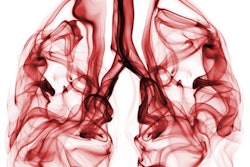
Computer-aided detection (CAD) software and PACS software may not always be integrated in the most user-friendly fashion. A Spanish research group hopes to change that with a new software platform that will make it easier for all hospitals in the region of Galicia to expand their use of CAD.
 Dr. Miguel Souto Bayarri, PhD, of the University of Santiago de Compostela in Santiago de Compostela, Spain.
Dr. Miguel Souto Bayarri, PhD, of the University of Santiago de Compostela in Santiago de Compostela, Spain.Based on an Integrating the Healthcare Enterprise (IHE) integration profile and standards such as DICOM and HL7, the platform will allow each institution to access whatever CAD algorithm they wish that's on the platform, regardless of what type of PACS software or imaging modality they use. The team, led by senior author Dr. Miguel Souto Bayarri, PhD, of the University of Santiago de Compostela in Santiago de Compostela, Spain, discussed their initiative in an paper published online on 10 February in the International Journal of Computer Assisted Radiology and Surgery.
"The aim is to introduce CAD modules in the daily clinical environment with a feasible RIS-PACS-CAD and EHR [electronic health record]-CAD integration model," Souto Bayarri and colleagues wrote.
Separate and independent
CAD and RIS/PACS software are usually two separate and independent systems that often have minimal communication between them, Souto Bayarri said.
"Currently, some PACS and CAD companies have been successful in integrating CAD applications within the PACS operation, but the solutions are either in a CAD-specific [workstation] or in a closed PACS operation environment using proprietary software and therefore, CAD-PACS integration is still necessary," the authors wrote.
In the Spanish region of Galicia, CAD algorithms have traditionally been connected to one workstation or acquisition system, generating a high cost per year and per acquisition system, according to the team.
"Over the last 10 years, we have been using different CAD models and therefore, the results have not been homogeneous," the authors wrote. "Furthermore, due to the high cost, only a few imaging modalities were connected to CAD systems, resulting in heterogeneous models."
Health innovation program
The group hopes to address that problem with their CAD initiative. The project is part of the Galician Health Service's InnovaSaúde Innovation Programme, which was partially funded by the European Regional Development Fund (ERDF) and supported by the Spanish Ministry of Economy and Competitiveness. This health innovation program included 14 subprojects to obtain innovative solutions that fulfill current and future healthcare needs, and one of the 14 projects was specifically intended to provide a suitable approach to extend the use of CAD software, Souto Bayarri said.
"Our goal in this project was to enable the use of CAD in the Galician Health System by using a communication platform, which connects all hospitals, thus allowing the use of different CAD modules seamlessly," Souto Bayarri told AuntMinnieEurope.com.
The group developed a platform that connects diagnostic and clinical workstations as well as imaging modalities with CAD algorithms by using HL7, the DICOM standard, and the IHE Post-Processing Workflow integration profiles.
"IHE, as well as HL7 and DICOM standards, must be taken into account to comply with the industrial standard for data format and communications in medicine," he noted. "In order to integrate CAD results into the DICOM data model and allow visualization on PACS workstations, a [structured reporting] template can be used to create a DICOM [structured reporting] object, where CAD results, reports, and marks can be saved."
Studies can be sent from an institution's PACS to the different CAD modules, meaning that CT scans from different manufacturers can be analyzed by the same or different CAD software, "thereby giving a homogeneous CAD service," according to the group.
Daily clinical use
The platform allows CAD results to be integrated with RIS/PACS workflow in the daily clinical environment, he said.
"[The] new platform will offer different CAD services on medical imaging and allow access to different research and commercial algorithms," the authors wrote.
In addition to the goal of increasing the use of internally developed CT lung CAD software in the Galician Health Service, the project also will integrate a commercial breast CAD application, according to the group.
"All mammography cases performed at our hospitals will be analyzed by the CAD system," they wrote. "Furthermore, all chest x-ray studies will also be analyzed by a CAD module automatically."
The CAD-PACS integration could also be useful in data mining applications to search for meaningful data within the PACS, Souto Bayarri said.
"By means of this CAD platform, we can send PACS data to the CAD algorithms and therefore, we can use PACS for the development and validation of algorithms," the authors wrote. "We can send studies manually or automatically using some rules, and therefore, the platform could automatically select studies based on age, range of time (years), gender .... Additionally, the activity and the use of CAD by the specialists can also be evaluated."



















